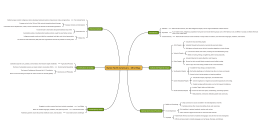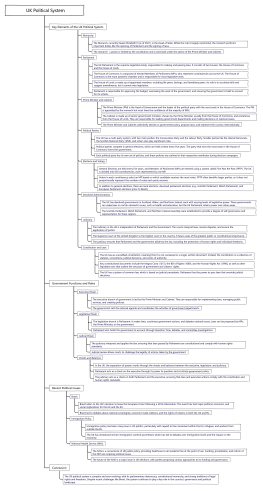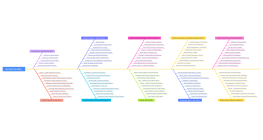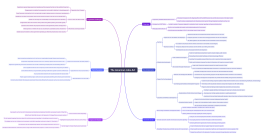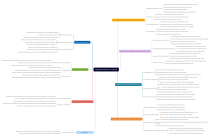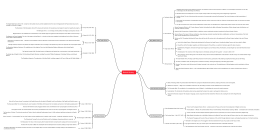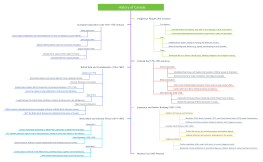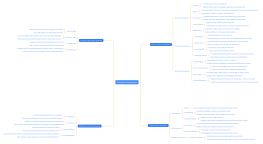Capital Budgeting Techniques Mind Map
2024-09-04 17:46:48 181 0 Report 0
0
Login to view full content
Other creations by the author
Outline/Content
Techniques for Capital Budgeting
Net Present Value (NPV)
Definition
Concept of NPV
Difference between the present value of cash inflows and outflows
Reflects Time Value of Money
Future cash flows are discounted to present value
Calculation
Formula: NPV = Σ (Cash Flow / (1 + Discount Rate)^t) - Initial Investment
Example Calculation
Project A: Initial Investment $100,000, Cash Flows: $30,000, $40,000, $50,000 over 3 years
Advantages
Direct Measure of Added Value
Shows value created for the firm
Considers Time Value of Money
Provides a realistic measure of profitability
Disadvantages
Requires Accurate Forecasting
Dependent on cash flow estimates
Sensitive to Discount Rate Assumptions
Small changes in rate can affect NPV significantly
Internal Rate of Return (IRR)
Definition
Concept of IRR
Discount rate that makes NPV of cash flows zero
Comparison with Cost of Capital
IRR should exceed the cost of capital to be acceptable
Calculation
Finding the Discount Rate that Sets NPV to Zero
Iterative process or financial calculator/software
Example Calculation
Project B: Initial Investment $50,000, Cash Flows: $15,000, $20,000, $25,000 over 3 years
Advantages
Easy to Understand and Communicate
Percentage return is intuitive
Useful for Comparing Projects
Simple comparison of different projects' returns
Disadvantages
Can Be Misleading with Non-Conventional Cash Flows
Multiple IRRs can occur with alternating cash flows
Multiple IRRs in Some Cases
Not unique in certain scenarios
Payback Period
Definition
Concept of Payback Period
Time required to recoup the initial investment
Focus on Liquidity
Measures how quickly the investment can be recovered
Calculation
Formula: Payback Period = Initial Investment / Annual Cash Inflows
Example Calculation
Project C: Initial Investment $40,000, Annual Cash Inflows $10,000
Advantages
Simple to Calculate and Understand
Straightforward and easy to use
Measures Liquidity Risk
Quick assessment of how soon the investment is recovered
Disadvantages
Ignores Time Value of Money
Does not discount future cash flows
Does Not Measure Profitability
Focuses only on recovery time, not total profitability
Discounted Payback Period
Definition
Concept of Discounted Payback Period
Time required to recoup the initial investment using discounted cash flows
Incorporates Time Value of Money
Discounts future cash flows to present value
Calculation
Adjusting Payback Calculation with Discounted Cash Flows
Uses discounted cash flows to calculate payback period
Example Calculation
Project D: Initial Investment $60,000, Discount Rate 10%, Annual Cash Inflows $15,000, $20,000, $25,000
Advantages
More Accurate than Payback Period
Accounts for time value of money
Considers Time Value of Money
Provides a more realistic recovery time
Disadvantages
Still Ignores Cash Flows Beyond Payback Period
Does not consider profitability after the payback period
Profitability Index (PI)
Definition
Concept of PI
Ratio of the present value of cash inflows to the initial investment
Ratio of Present Value of Cash Inflows to Outflows
Indicates relative profitability of an investment
Calculation
Formula: PI = Present Value of Cash Inflows / Initial Investment
Example Calculation
Project E: Present Value of Cash Inflows $80,000, Initial Investment $50,000
Advantages
Useful for Comparing Projects of Different Sizes
Relative measure of profitability
Indicates Relative Profitability
Helps prioritize projects with higher PI
Disadvantages
Less Useful for Mutually Exclusive Projects
May not provide a clear decision if projects are competing for the same resources
Modified Internal Rate of Return (MIRR)
Definition
Concept of MIRR
Adjusts IRR to account for cost of capital and reinvestment rates
Adjustments to IRR Calculation
Provides a more accurate reflection of profitability
Calculation
Formula: MIRR = (Terminal Value of Cash Inflows / PV of Cash Outflows)^(1/n) - 1
Example Calculation
Project F: Initial Investment $70,000, Cash Inflows: $20,000, $30,000, $40,000 over 3 years, Reinvestment Rate 12%
Advantages
Addresses Some IRR Limitations
Corrects for unrealistic IRR assumptions
Provides a More Accurate Measure
Reflects true profitability more accurately
Disadvantages
More Complex to Calculate
Requires additional calculations compared to IRR
Introduction to Capital Budgeting
Definition
What is Capital Budgeting?
Process of planning and managing investments in fixed assets
Evaluates potential major projects or investments
Purpose and Importance
Determines which projects to pursue
Ensures effective allocation of resources
Objectives
Maximizing Firm Value
Increasing shareholder wealth
Long-term financial growth
Allocating Resources Efficiently
Prioritizing profitable projects
Managing risk and returns
Comparing Techniques
NPV vs. IRR
Differences
NPV as a Dollar Amount vs. IRR as a Percentage
NPV provides an absolute value, IRR provides a rate of return
Decision Criteria Differences
NPV: Accept if positive; IRR: Accept if IRR > Cost of Capital
When to Use Each
NPV for Absolute Value
Best for determining the exact value added
IRR for Percentage-Based Comparison
Useful for comparing projects of different scales
Payback Period vs. Discounted Payback Period
Differences
Payback Period vs. Discounted Adjustments
Discounted Payback accounts for time value of money
Cash Flow Consideration Differences
Payback Period ignores future cash flows beyond recovery; Discounted Payback considers discounted cash flows
Applications of Capital Budgeting
Investment Decisions
Evaluating New Projects
Assessing feasibility and profitability of new investments
Asset Replacement
Deciding whether to replace or upgrade existing assets
Risk Assessment
Sensitivity Analysis
Analyzing how changes in key assumptions impact outcomes
Scenario Analysis
Evaluating different scenarios and their impact on project viability
Common Challenges and Solutions
Estimating Cash Flows
Accuracy of Projections
Techniques for Improving Accuracy
Using historical data, market research, expert opinions
Handling Uncertainties
Using Sensitivity and Scenario Analysis
Assessing impact of uncertainties on cash flows
Discount Rate Selection
Choosing the Right Rate
Techniques for Determining Appropriate Rate
Based on cost of capital, risk premium, market conditions
Impact on Results
Sensitivity to Discount Rate Changes
Evaluating how variations in rate affect NPV and other metrics

Collect
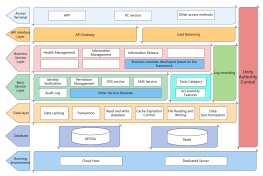
Collect
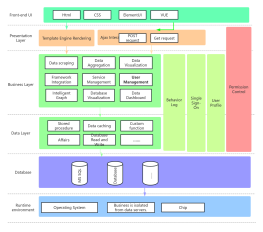
Collect
0 Comments
Next page
Recommended for you
More



